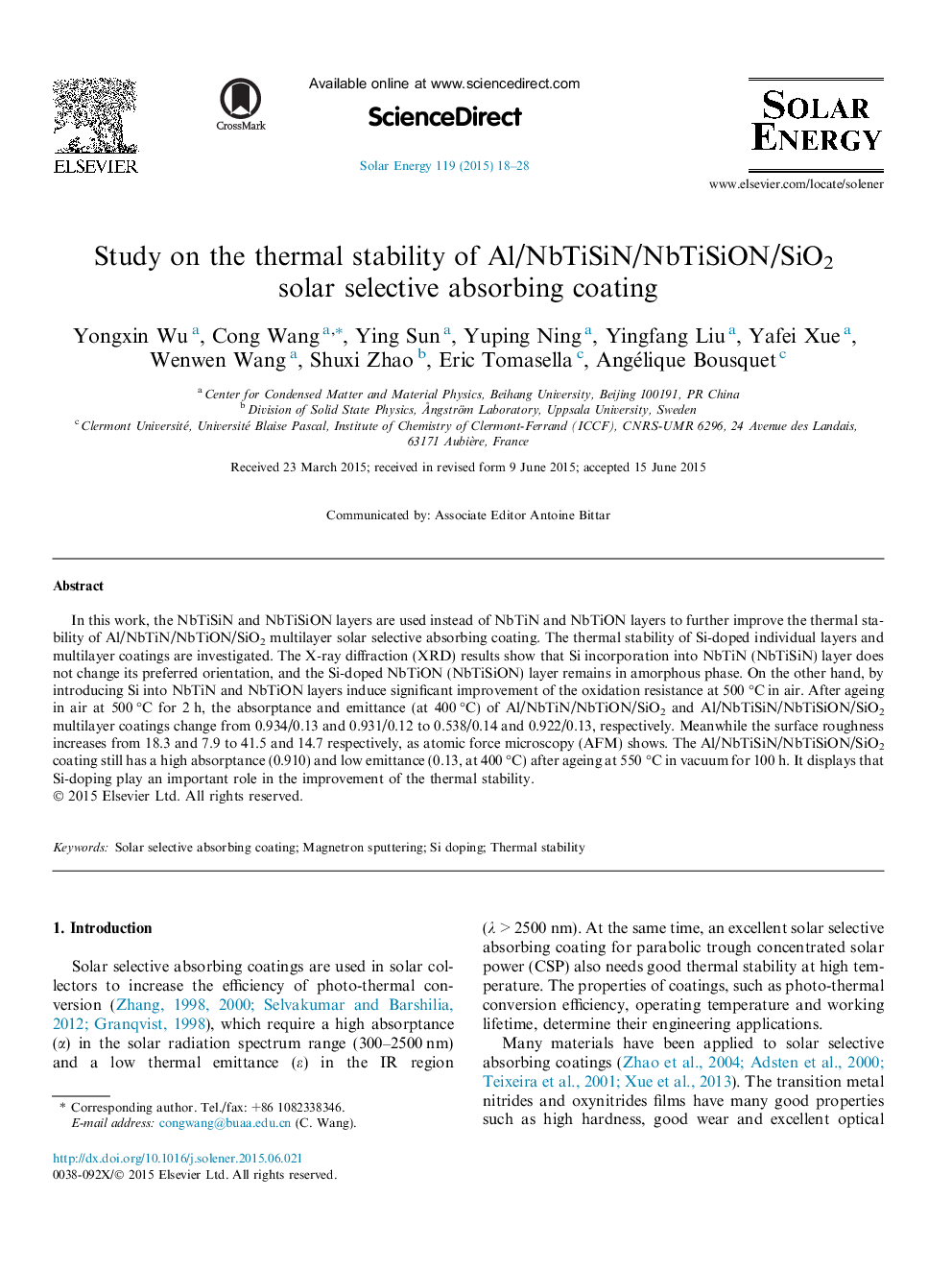| Article ID | Journal | Published Year | Pages | File Type |
|---|---|---|---|---|
| 7937541 | Solar Energy | 2015 | 11 Pages |
Abstract
In this work, the NbTiSiN and NbTiSiON layers are used instead of NbTiN and NbTiON layers to further improve the thermal stability of Al/NbTiN/NbTiON/SiO2 multilayer solar selective absorbing coating. The thermal stability of Si-doped individual layers and multilayer coatings are investigated. The X-ray diffraction (XRD) results show that Si incorporation into NbTiN (NbTiSiN) layer does not change its preferred orientation, and the Si-doped NbTiON (NbTiSiON) layer remains in amorphous phase. On the other hand, by introducing Si into NbTiN and NbTiON layers induce significant improvement of the oxidation resistance at 500 °C in air. After ageing in air at 500 °C for 2 h, the absorptance and emittance (at 400 °C) of Al/NbTiN/NbTiON/SiO2 and Al/NbTiSiN/NbTiSiON/SiO2 multilayer coatings change from 0.934/0.13 and 0.931/0.12 to 0.538/0.14 and 0.922/0.13, respectively. Meanwhile the surface roughness increases from 18.3 and 7.9 to 41.5 and 14.7 respectively, as atomic force microscopy (AFM) shows. The Al/NbTiSiN/NbTiSiON/SiO2 coating still has a high absorptance (0.910) and low emittance (0.13, at 400 °C) after ageing at 550 °C in vacuum for 100 h. It displays that Si-doping play an important role in the improvement of the thermal stability.
Related Topics
Physical Sciences and Engineering
Energy
Renewable Energy, Sustainability and the Environment
Authors
Yongxin Wu, Cong Wang, Ying Sun, Yuping Ning, Yingfang Liu, Yafei Xue, Wenwen Wang, Shuxi Zhao, Eric Tomasella, Angélique Bousquet,
